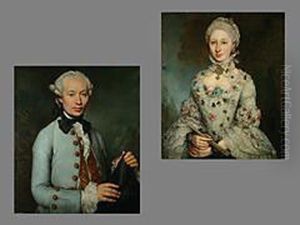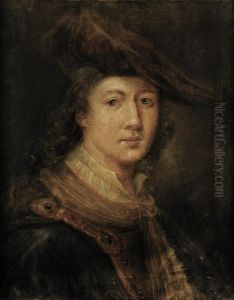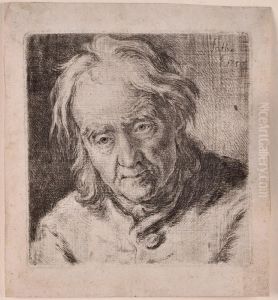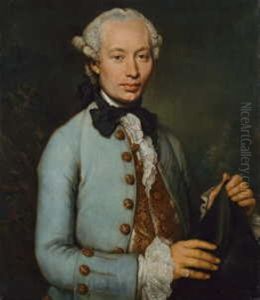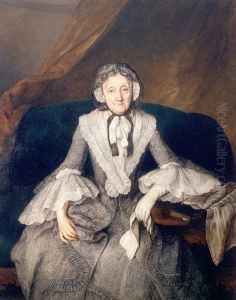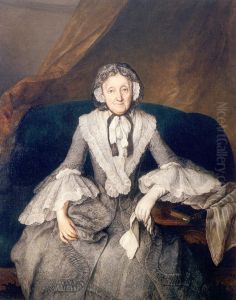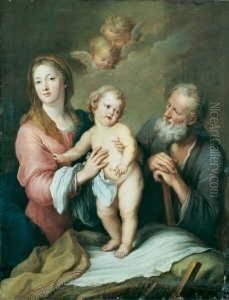Joachim Martin Falbe Paintings
Joachim Martin Falbe was a German painter and etcher born in Berlin in 1709. He is noted for his portraits and was an active artist during the 18th century, a period marked by the Baroque and Rococo artistic movements. Falbe’s work was influenced by the grandeur and attention to detail that characterized these styles, although specific aspects of his technique and influence reflect the transition toward the more relaxed and ornate Rococo period.
Falbe received his early training in Berlin and later traveled to Paris to further his education in the arts. In Paris, he was significantly influenced by the French artistic scene and would have had the opportunity to study the works of contemporary artists and the old masters. This exposure would have honed his skills in portraiture, a genre in which he specialized throughout his career.
After his time in Paris, Falbe became a court painter in Denmark. His work gained recognition, and he was appointed as a court painter to King Christian VI of Denmark. This prestigious position allowed him to secure a considerable number of commissions and to interact with the Danish nobility and other high-ranking officials, which served to enhance his reputation as an artist.
Falbe's portraits are known for their elegance and attention to the fine details of fabrics and textures, as well as the psychological depth he captured in the faces of his sitters. His work often included a delicate use of light and shadow, a technique that was essential to portrait art of the time and that helped to create a sense of three-dimensionality and realism.
Throughout his career, Joachim Martin Falbe also engaged in etching, a form of printmaking that allowed artists to reproduce their works and reach a broader audience. His etchings contributed to the dissemination of his style and the Rococo aesthetic, influencing other printmakers and artists.
Falbe died in 1782, having contributed to the European portrait painting tradition. His works can be seen as a reflection of the cultural and artistic tastes of the 18th century European aristocracy. Although not as widely known as some of his contemporaries, Falbe’s art provides a window into the society and artistic milieu of his time.
